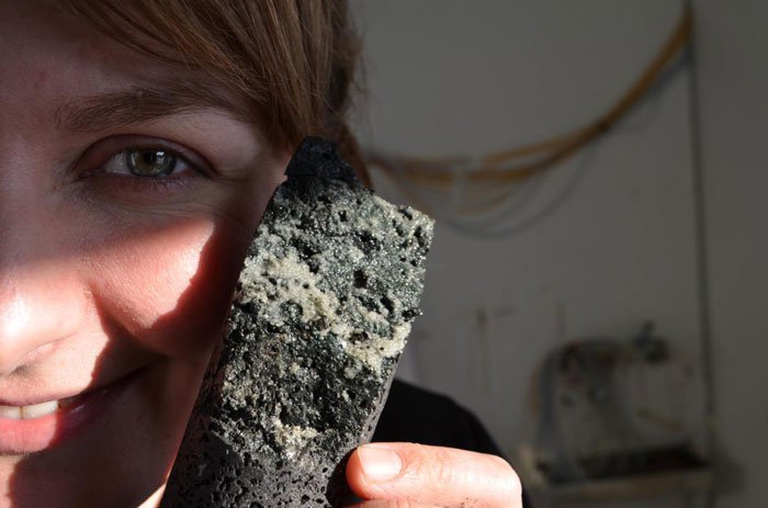
South African court dismisses a major lawsuit by 140,000 Zambian women and children against Anglo American for Kabwe lead poisoning. A setback for affected communities enduring the lasting impact of lead contamination.
There are many examples of carbon capture and sequestration (CCS), a system mainly used in thermoelectric power plants to reduce the emissions of the combustion process. However, the drawback of costs and how to find proper spaces in which storing carbon dioxide while avoiding uncontrollable leakage makes this system difficult to use. For this reason,
There are many examples of carbon capture and sequestration (CCS), a system mainly used in thermoelectric power plants to reduce the emissions of the combustion process.
However, the drawback of costs and how to find proper spaces in which storing carbon dioxide while avoiding uncontrollable leakage makes this system difficult to use. For this reason, a new experiment called Carbfix, conducted by a team of international scientists, could change the future of the carbon capture and sequestration.
In Iceland, a land rich in basaltic rocks, researchers have demonstrated that pumping CO2 underground is possible and that, in certain physical and chemical conditions, it becomes carbonate rock.
The study, published in Science, shows for the first time ever that storing CO2 in a permanent and stable way is feasible. And what surprises the most is processing time. While rocks take geological eras to become such, Carbfix allows carbon dioxide to become carbonate rock in less than 2 years, a blink of an eye for geology.
Moreover, the researchers have showed that 95 per cent of the CO2 pumped underground to a depth of 400 to 800 metres has been tuned into stone. “Our results demonstrate that the safe long-term storage of anthropogenic CO2 emissions through mineralization can be far faster than previously postulated,” reads the paper.
“Carbonate minerals do not leak out of the ground, thus our newly developed method results in permanent and environmentally friendly storage of CO2 emissions,” said Juerge M. Matter, the study’s lead author. “On the other hand, basalt is one of the most common rock types on Earth, potentially providing one of the largest means of CO2 storage capacity.” The experiment has been conducted at the Hellisheidi geothermal power plant outside Reykjavik, where 5,000 tonnes of CO2 are pumped underground every year to be turned into stone.
In order to turn CO2 into rock, huge quantities of water are needed. In fact, carbon dioxide is mixed with water to lower pH and to make it react with basalt. The ratio of water to CO2 is 95 per cent to 5 per cent. And scientists claim that using sea water isn’t feasible and costs to build these kind of plants would be high. In any case, the project represents a step forward for finding a solution to reduce greengouse gas emissions.
Siamo anche su WhatsApp. Segui il canale ufficiale LifeGate per restare aggiornata, aggiornato sulle ultime notizie e sulle nostre attività.
![]()
Quest'opera è distribuita con Licenza Creative Commons Attribuzione - Non commerciale - Non opere derivate 4.0 Internazionale.
South African court dismisses a major lawsuit by 140,000 Zambian women and children against Anglo American for Kabwe lead poisoning. A setback for affected communities enduring the lasting impact of lead contamination.
Controversial African land deals by Blue Carbon face skepticism regarding their environmental impact and doubts about the company’s track record, raising concerns about potential divergence from authentic environmental initiatives.
Majuli, the world’s largest river island in Assam State of India is quickly disappearing into the Brahmaputra river due to soil erosion.
Food imported into the EU aren’t subject to the same production standards as European food. The introduction of mirror clauses would ensure reciprocity while also encouraging the agroecological transition.
Sikkim is a hilly State in north-east India. Surrounded by villages that attracts outsiders thanks to its soothing calmness and natural beauty.
Sikkim, one of the smallest states in India has made it mandatory for new mothers to plant saplings and protect them like their children to save environment
Chilekwa Mumba is a Zambian is an environmental activist and community organizer. He is known for having organized a successful lawsuit against UK-based mining companies.
What led to the Fukushima water release, and what are the impacts of one of the most controversial decisions of the post-nuclear disaster clean-up effort?
Nzambi Matee is a Kenyan engineer who produces sustainable low-cost construction materials made of recycled plastic waste with the aim of addressing plastic pollution and affordable housing.









